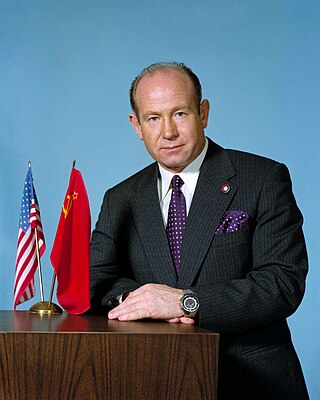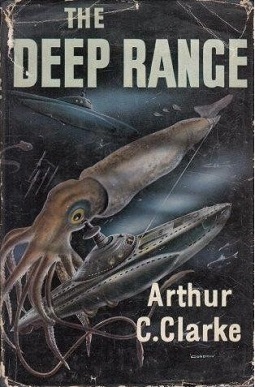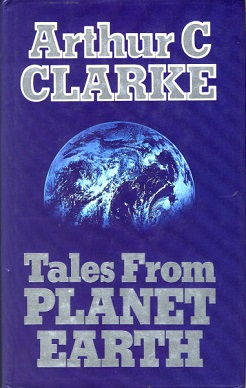Plot summary
Set in an unspecified year, but probably a few years after 1956, the story centers on Szabo Tibor, an expatriate Hungarian, working as a pearl diver on a pearling boat between Queensland's Great Barrier Reef and Thursday Island.
When an off-course Russian space capsule crash-lands in the sea nearby, Tibor is the first to reach it. He makes contact with the still-alive cosmonaut inside, who can hear him talking but cannot respond except by knocking on the hull. Tibor, who escaped from Hungary during the 1956 uprising and whose brother was killed by invading Russians, takes revenge by delaying the salvage attempts until the capsule's air has run out and the cosmonaut is dead.
When they get the capsule to land and open the hatch, they find that the dead cosmonaut, a beautiful young girl, has managed to record Tibor's words on a tape recorder, thus branding him as a murderer.

Alexei Arkhipovich Leonov was a Soviet and Russian cosmonaut, Air Force major general, writer, and artist. On 18 March 1965, he became the first person to conduct a spacewalk, exiting the capsule during the Voskhod 2 mission for 12 minutes and 9 seconds. He was also selected to be the first Soviet person to land on the Moon although the project was cancelled.

Tales from the White Hart is a collection of short stories by science fiction writer Arthur C. Clarke, in the "club tales" style.

The Deep Range is a 1957 science fiction novel by British writer Arthur C. Clarke, concerning a future sub-mariner who works in the field of mariculture, herding whales. The story includes the capture of a sea monster similar to a kraken.

The Collected Stories of Arthur C. Clarke, first published in 2001, is a collection of almost all science fiction short stories written by Arthur C. Clarke. It includes 114 stories, arranged in order of publication, from "Travel by Wire!" in 1937 through to "Improving the Neighbourhood" in 1999. The story "Improving The Neighbourhood" has the distinction of being the first fiction published in the journal Nature. The titles "Venture to the Moon" and "The Other Side of the Sky" are not stories, but the titles of groups of six interconnected stories, each story with its own title. This collection is only missing a very few stories, for example "When the Twerms Came", which appears in his other collections More Than One Universe and The View from Serendip. This edition contains a foreword by Clarke written in 2000, where he speculates on the science fiction genre in relation to the concept of short stories. Furthermore, many of the stories have a short introduction about their publication history or literary nature.

Tales of Ten Worlds is a collection of science fiction short stories by British writer Arthur C. Clarke. The stories all originally appeared in a number of different publications.
"The Star" is a science fiction short story by English writer Arthur C. Clarke. It appeared in the science fiction magazine Infinity Science Fiction in 1955 and won the Hugo Award in 1956. It is collected in Clarke's 1958 book of short stories The Other Side of the Sky, and it was reprinted in the January 1965 issue of Short Story International as the lead-off story.
"Red Star, Winter Orbit" is a short story written by William Gibson and Bruce Sterling in the 1980s. It was first published in Omni in July 1983, and later collected in Burning Chrome, a 1986 anthology of Gibson's early short fiction, and in Sterling's 1986 cyberpunk anthology Mirrorshades. The story is set in an alternate future where the Soviet Union controls most of the Earth's resources, especially oil. As a result of this the United States is no longer a dominant economic power on earth and the Soviets have won the space race.
"Into the Comet" is a science fiction short story by British writer Arthur C. Clarke. It was originally published in Fantasy & Science Fiction in October 1960. It is one of several stories by many science fiction authors in which problems are solved by reverting to 'primitive' technology. The story was also published as "Inside the Comet".

A Meeting with Medusa is a science fiction novella by British writer Arthur C. Clarke. It was originally published in 1971 and has since been included in the anthology Nebula Award Stories Eight as well as several collections of Clarke's writings.
"Sunjammer" is a science fiction short story by British writer Arthur C. Clarke, originally published in the March 1964 issue of Boys' Life,. The story has also been published under the title "The Wind from the Sun" in Clarke's 1972 collection of short stories with this title. It depicts a yacht race between solar sail spacecraft.
"Death and the Senator" is a science fiction short story by British writer Arthur C. Clarke. It was originally published in 1961 and has since been included in several collections of Clarke's writings.

"Transience" is a science fiction short story by English writer Arthur C. Clarke, first published in 1949 in the magazine Startling Stories. It was later collected in The Other Side of the Sky and The Nine Billion Names of God.
"Time's Arrow" is a science fiction short story by British writer Arthur C. Clarke, first published in 1950 in the first issue of the magazine Science Fantasy. The story revolves about the unintended consequences of using time travel to study dinosaurs.
Venture to the Moon is a group of six linked science fiction short stories by English writer Arthur C. Clarke. It was originally published in the British newspaper Evening Standard in 1956. The stories describe the first crewed mission to the Moon in 1975, as a joint American-Russian-British mission, and are narrated in first person from the point of view of the British team commander. Despite the death described in the third story, they are written in a humorous vein. They are collected in The Other Side of the Sky.
"Summertime on Icarus" is a science fiction short story by British writer Arthur C. Clarke, first published in Vogue in 1960. It was also published under the title "The Hottest Piece of Real Estate in the Solar System".

Tales From Planet Earth is a collection of science fiction short stories by British writer Arthur C. Clarke, originally published in 1989.

More Than One Universe: The Collected Stories of Arthur C. Clarke is a collection of science fiction short stories by Arthur C. Clarke originally published in 1991.

Sir Arthur Charles Clarke was a British science fiction writer, science writer, futurist, inventor, undersea explorer, and television series host.
The following is a list of works by Arthur C. Clarke.
"The Awakening" is a science fiction short story by English writer Arthur C. Clarke. There are two distinct versions of this short story.
This page is based on this
Wikipedia article Text is available under the
CC BY-SA 4.0 license; additional terms may apply.
Images, videos and audio are available under their respective licenses.










